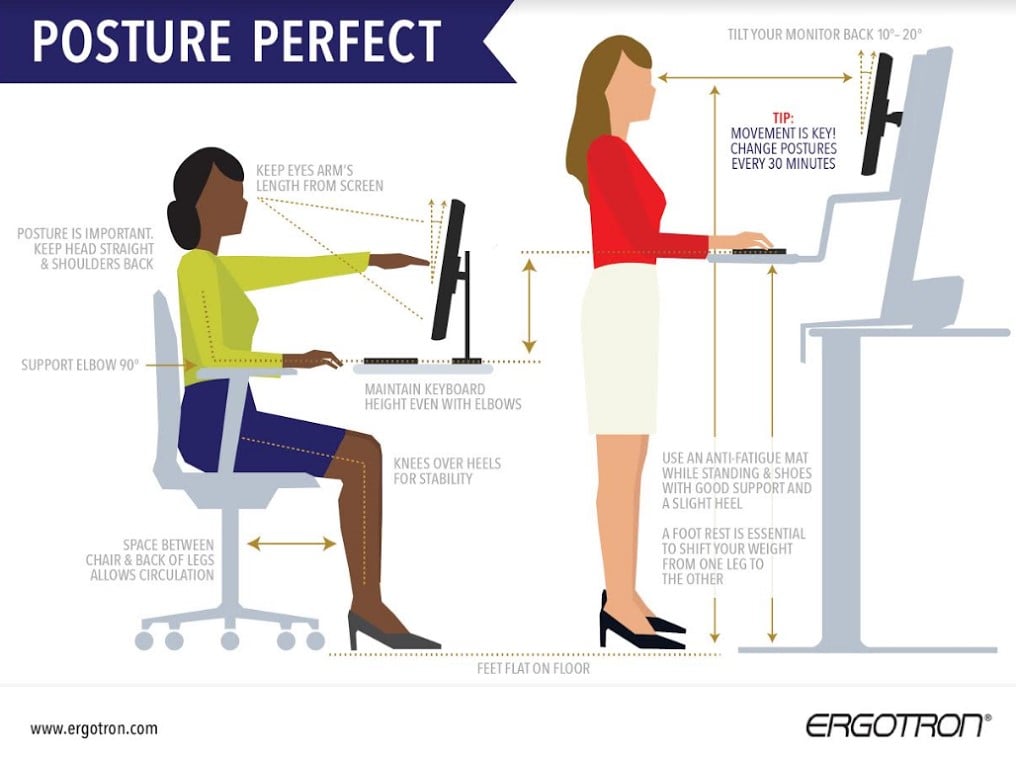Better Posture in the Workplace

There's something about sitting in front of a desk and facing a screen for hours on end that can make it tough to remember to sit up straight. And besides, does it make such a big difference if we sit at attention or slump like couch potatoes?
Personal Trainer, Jonathan Jordan (“JJ”) has worked with hundreds of clients and "Nearly all of them come to me with health issues related to chronic sitting, traveling and commuting in poor posture." JJ explains how it happens "When we sit, even with good posture, the glutes are lengthened so they become weak. Weak glutes force the back muscles to work harder which leads to pain, misalignment and herniation. Most people don't engage their core when they sit, so the problems get even worse."
Carrie Schmitz, Senior Manager of Human Factors & Ergonomics Research at standing-desk manufacturer Ergotron, explained some of the impact your posture can have on your health "Craning your neck forward can strain the cervical vertebrae and lead to damage that is difficult to repair. It only takes 20 minutes before bad posture and slouching deforms your ligaments."
Many people rely on standing desks, Schmitz explains there are other options as well "Standing desks provide only one, neutral posture designed to help improve circulation; while an ergonomically-designed seated workstation is designed to improve disorders and pain (such as that in the eye, neck and back strain, wrist, hand, elbow and shoulder as well as Carpal Tunnel Syndrome). The best desk solution is one that blends these two designs: a sit-stand workstation." And it doesn't have to be an expensive setup, as long as you create an environment where you're at times sitting or standing in the correct postures or positions, you're already going a long way to improving both your health and comfort. Schmitz also supplied an infographic to give us an idea of what the optimal sit/stand setup might look like.

You may also like:
Fit Tip: Home Office Workout

